It’s Party Time!
Your guide to the political parties and their leaders
The General Election is being held on Thursday 12 December. You have to be 18 to vote. But, although you don’t get a vote, it’s important that you do get a voice!
Read all about the parties standing in the General Election, below.
Make sure you pick up your copy of First News for more election coverage and all the other week’s news
Subscribe now to get three issues for £1!
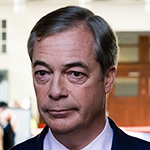
Brexit Party
Nigel Farage
@Nigel_Farage
Leader: Nigel Farage
How many MPs: 0
The Brexit Party was formed for one reason: to make sure the UK leaves the European Union.
They won the recent European elections, delivering them 29 MEPs, even though they are campaigning for Britain to leave the EU and, obviously, its Parliament! As First News went to press, they had not revealed many policies other than to have a hard Brexit. But they have proposed a £200 billion spending programme on infrastructure and services for young people.
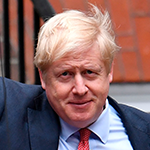
Conservative Party
Boris Johnson
@borisjohnson

Green Party
Jonathan Bartley and Sian Berry
@jon_bartley @SianBerry
Leader: Jonathan Bartley and Caroline Lucas
How many MPs: 1 (woman)
The Green Party is an environmentalist, left-wing party whose focus is on green issues, such as tackling climate change.
They want to invest £100 billion a year for a decade to tackle climate change, and create more than a million new “green jobs” in the UK.
They also want to scrap university tuition fees and write off existing student debt.
The Greens don’t want Brexit to happen, and want another referendum to be held. They will campaign to Remain in that vote.
Although they won’t win this year’s general election, they have had a boost in popularity: the Greens had their most successful European election ever earlier this year, when they increased their number of Members of the European Parliament (MEPs) from three to seven.
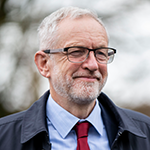
Labour Party
Jeremy Corbyn
@jeremycorbyn

Liberal Democrats
Jo Swinson
@joswinson
Leader: Jo Swinson (MP for East Dunbartonshire)
How many MPs: 21 (11 men, 10 women)
The Liberal Democrats – or Lib Dems – are known as ‘centrists’, which means that unlike the Conservatives or Labour, the party doesn’t have mainly left-wing or right-wing policies. Instead, they mix ideas from across the political spectrum. But their main policy this year is to stop Brexit.
They say that if they win a majority in the election, they will cancel Brexit altogether, without another referendum. Realistically, though, they won’t win a majority, but could form part of a coalition government and argue for a new referendum.
When it comes to the economy, the Lib Dems believe strongly in free trade and less regulation for business. Unlike the Conservatives, however, the Lib Dems believe that a stronger economy is created by working towards a more global society.
Eight of the last Lib Dem MPs were elected for another party, and switched to the Lib Dems during the last Parliament.

Plaid Cymru
Adam Price
@Adamprice
Leader: Adam Price (Member of the Welsh Assembly for Carmarthen East and Dinefwr)
How many MPs: 1 (woman)
A centre-left party, Plaid Cymru candidates only stand in the 40 Welsh constituencies. They want independence for Wales, just as the SNP want it for Scotland. They think it can be achieved within the next ten years.
Plaid Cymru also want to stop Brexit by supporting a new referendum.
They want to introduce “green jobs” in Wales, with major investment in renewable energy, transport infrastructure and digital services. The party wants the Welsh Assembly to have full control of policing and the justice system, which it doesn’t right now.
They have also proposed new benefits for children in low-income families, and a £300 million investment in Welsh education.
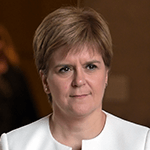
Scottish National Party
Nicola Sturgeon
@NicolaSturgeon
Leader: Nicola Sturgeon (First Minister of Scotland and MSP for Glasgow Southside)
How many MPs: 35 (23 men, 12 women)
Since SNP candidates only run in the 59 Scottish constituencies, only voters living in Scotland are able to vote for the SNP. They are the biggest party in Scotland.
The party’s ultimate aim is for Scotland to become an independent country, separate from the rest of the UK. Their two main policies this year are to push for a referendum on Brexit, and a new referendum for Scottish voters on the question of independence. The SNP are strongly against Brexit.
They are also against the UK’s Trident nuclear weapons system, which is based in Scotland, and would like to see all the country’s nuclear weapons scrapped.
The SNP is on the left of politics, so has more in common with Labour than the Tories. Like Labour, they want to nationalise some public services. That means taking things like the railways out of private control and under the Government’s authority.
They oppose the Government’s tough benefits policies and are against increasing the pension age above 66.
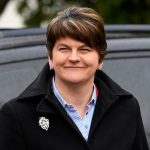
Northern Ireland Parties
DUP, Sinn Fein and others
The largest Northern Irish party in the House of Commons before the election was called was the Democratic Unionist Party (DUP), which had 10 MPs. They signed a deal to support the Government of the previous Prime Minister, Theresa May, but fell out with current PM Boris Johnson over his Brexit deal.
The DUP is right-wing in its policies. The party is ‘unionist’, which means it thinks that Northern Ireland should continue to be a part of the United Kingdom. They are strongly in favour of Brexit. The DUP have also proposed increasing spending on health in Northern Ireland by at least £1 billion.
The other main unionists are the Ulster Unionist Party, though they had no MPs before the election.
The second biggest party representing Northern Ireland is the left-wing Sinn Fein, who returned seven MPs at the 2017 election, but they never take their seats in Westminster. That’s because Sinn Fein does not recognise Northern Ireland as being part of the UK. They believe it should be part of a united Republic of Ireland, joining the southern part of the country that is independent and therefore not governed by UK Government.
Also running at this year’s general election are the Social Democratic and Labour Party, the Alliance Party and the Green Party. None currently has any MPs in the House of Commons.
